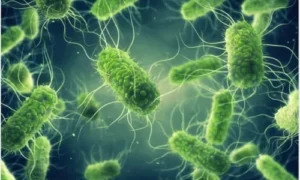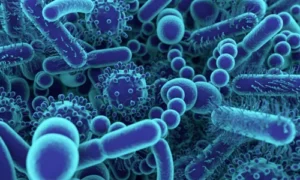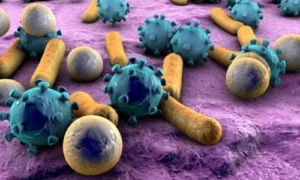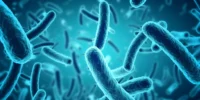Microorganisms are small living organisms that are invisible to the naked eye. They exist all around us, in the air, water, soil, and even within our bodies. Some microorganisms are beneficial and make our lives easier, whilst others can cause illness and spoil food. In this article, we will look at both good and hazardous microbes using basic examples.
Useful Microorganisms

1. In Food Production
Microorganisms play a crucial part in the preparation of the food and beverages we consume every day.
- Lactobacillus bacteria transform milk into curd.
- Yeast, a type of fungus, contributes to the fluffy texture of bread, cakes, and pastries by releasing carbon dioxide during the fermentation process.
- Fungi also help to make cheese and alcoholic beverages such as wine and beer.
For example, microbes are involved in the fermentation process needed to make idlis, dosas, and bread.
2. In the medical field
Life-saving medications are made from microorganisms.
- Fungi are the source of antibiotics like penicillin (Penicillium).
- To shield our bodies from illnesses like COVID-19, measles, and polio, vaccines are created utilising weakened or dead microorganisms.
For example, Alexander Fleming’s discovery of penicillin was one of the first antibiotics to save millions of lives.
3. In Agriculture
Microorganisms boost soil fertility and promote plant growth.
- Rhizobium bacteria inhabit the roots of leguminous plants (such as peas and beans) and fix nitrogen from the atmosphere into the soil.
- Cyanobacteria (blue-green algae) help enrich the soil, which reduces the demand for chemical fertilisers.
For example, Farmers employ biofertilizers containing microbes to organically maintain soil health.
4. In cleaning the environment
- Microorganisms serve as natural cleansers by digesting dead plants, animals, and garbage.
- They convert organic matter into simple substances that mix with the soil and provide nutrients to plants.
For example, Composting transforms kitchen trash into natural fertiliser with the assistance of bacteria.
Harmful Microorganisms

While many microorganisms are helpful, some can cause harm to humans, animals, and plants.
1. Disease-Causing Microorganisms (Pathogens)
Certain bacteria, viruses, fungi, and protozoa cause diseases.
- Bacteria: Typhoid, cholera, tuberculosis
- Viruses: Influenza, COVID-19, dengue
- Protozoa: Malaria, amoebic dysentery
- Fungi: Ringworm, athlete’s foot
Example: The Plasmodium parasite, spread by mosquito bites, causes malaria.
2. Food spoilage
- Microorganisms can contaminate food if it is left open or improperly preserved.
- They grow swiftly in warm, damp environments, generating a horrible odour and flavour.
For example, microbial proliferation causes bread to get mouldy and milk to turn sour.
3. Crop Diseases
- Some microorganisms attack plants, lowering yields and harming harvests.
For example, fungal infections cause rust disease in wheat and late blight in potatoes (the illness that caused the Irish famine).
Preventing Harmful Effects

We can protect ourselves from harmful microorganisms by following these steps:
1. Wash your hands regularly before eating.
2. Eat properly cooked and covered food.
3. Keep the surroundings clean to prevent mosquito breeding.
4. Get vaccinated on time.
5. Store food in refrigerators or airtight containers.
Conclusion
Microorganisms are both allies and enemies. While they aid in the production of food and medication, as well as environmental preservation, they can also cause disease and spoilage. Understanding their role enables us to use the beneficial ones wisely and avoid the negative ones efficiently.






